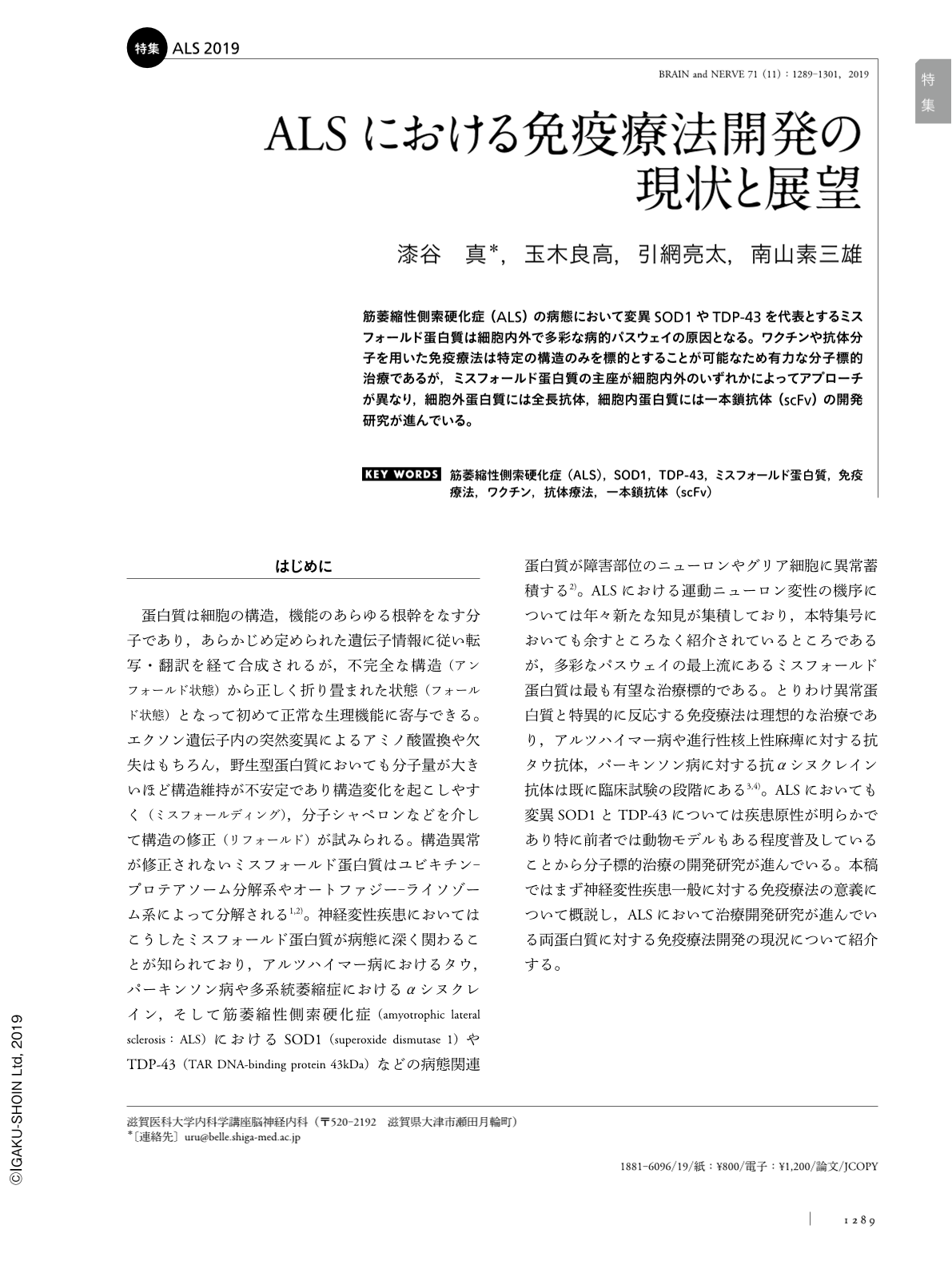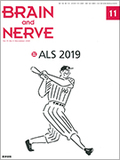Japanese
English
- 有料閲覧
- Abstract 文献概要
- 1ページ目 Look Inside
- 参考文献 Reference
筋萎縮性側索硬化症(ALS)の病態において変異SOD1やTDP-43を代表とするミスフォールド蛋白質は細胞内外で多彩な病的パスウェイの原因となる。ワクチンや抗体分子を用いた免疫療法は特定の構造のみを標的とすることが可能なため有力な分子標的治療であるが,ミスフォールド蛋白質の主座が細胞内外のいずれかによってアプローチが異なり,細胞外蛋白質には全長抗体,細胞内蛋白質には一本鎖抗体(scFv)の開発研究が進んでいる。
Abstract
Protein misfolding crucially underlies the pathogenesis of amyotrophic lateral sclerosis (ALS). Mutant superoxide dismutase 1 (SOD1) and TAR DNA-binding protein 43kDa (TDP-43) are major causal proteins for familial and sporadic ALS, respectively, provoking diverse pathogenic pathways in both intracellular and extracellular environments. Of note, cell-to-cell spreading behavior is implicated in the progression of neurodegeneration, suggesting application in immunotherapies including vaccination, and antibody application as a molecular targeting therapy, due to strict antigen-specificity. Although immunotherapy of intravenous application of full-length immunoglobulin is aimed at targeting the extracellular proteins because of low access to the cytosol, it is therefore necessary to generate expression vectors for variable single chain fragments (scFv) that target intracellular proteins. Despite the advantages of scFv, such as low molecular size and the ability to apply molecular modifications adding proteolytic signals, safety and efficacy should be cautiously estimated in preclinical studies, using appropriate animal models. In ALS, we firstly succeeded in the vaccination of mutant SOD1 transgenic mice, which was followed by accumulating evidence showing the efficacy of immunization against misfolded SOD1. In TDP-43 proteinopathy, we are developing immunotherapy using intrabodies with proteolytic properties against mislocalized or aggregated forms of TDP-43 inside cells.

Copyright © 2019, Igaku-Shoin Ltd. All rights reserved.


